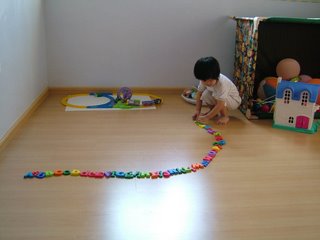Measuring Amazon
I received this following e-mail from Amazon.com recently:
Amazon.com has new recommendations for you based on XXX (censored by yours truly in case eyes pop out reading how many books I own or bought :P) items you purchased or told us you own.
We recommend Luftwaffe Aces: German Combat Pilots of World War II (Stackpole Military History Series)
http://www.amazon.com/o/ASIN/0811731774/ref=pe_arr_d_0811731774_1_txt
List Price : $19.95
Price : $13.57
You Save : $6.38 (32%)
Because you purchased or rated:
* Messerschmitts over Sicily: Diary of a Luftwaffe Fighter Commander (Stackpole Military History Series)
You are 28,017 times more likely (my own bold) to purchase this item than other customers.
We recommend Harry Potter and the Half-Blood Prince (Book 6)
http://www.amazon.com/o/ASIN/0439784549/ref=pe_arr_d_0439784549_2_txt
List Price : $29.99
Price : $16.99
You Save : $13.00 (43%)
Because you purchased or rated:
* The Complete Peanuts 1955-1956
* The Complete Peanuts 1953-1954
You are 7.1 times more likely (again, my own bold) to purchase this item than other customers.
I'm just so so curious on how they measured or estimated that I am 28,017 and 7.1 (got point one some more) times more likely to buy those two recommended books. Got statistical proof or not? Perhaps even more pertinently, why tell it to the customer? More convincing? Hmm...
Actually, I enjoy buying books from Amazon.com. Great range of books. Prices are cheap, even cheaper than that of Singapore stores. However, once you add on the per order and per book shipping costs, the total becomes prohibitive. So I only buy from them when I really can't find the book anywhere else. And even then, I make sure I have a list of wanted books before ordering, to spread out that hefty per order cost.
198 days to go.
Amazon.com has new recommendations for you based on XXX (censored by yours truly in case eyes pop out reading how many books I own or bought :P) items you purchased or told us you own.
We recommend Luftwaffe Aces: German Combat Pilots of World War II (Stackpole Military History Series)
http://www.amazon.com/o/ASIN/0811731774/ref=pe_arr_d_0811731774_1_txt
List Price : $19.95
Price : $13.57
You Save : $6.38 (32%)
Because you purchased or rated:
* Messerschmitts over Sicily: Diary of a Luftwaffe Fighter Commander (Stackpole Military History Series)
You are 28,017 times more likely (my own bold) to purchase this item than other customers.
We recommend Harry Potter and the Half-Blood Prince (Book 6)
http://www.amazon.com/o/ASIN/0439784549/ref=pe_arr_d_0439784549_2_txt
List Price : $29.99
Price : $16.99
You Save : $13.00 (43%)
Because you purchased or rated:
* The Complete Peanuts 1955-1956
* The Complete Peanuts 1953-1954
You are 7.1 times more likely (again, my own bold) to purchase this item than other customers.
I'm just so so curious on how they measured or estimated that I am 28,017 and 7.1 (got point one some more) times more likely to buy those two recommended books. Got statistical proof or not? Perhaps even more pertinently, why tell it to the customer? More convincing? Hmm...
Actually, I enjoy buying books from Amazon.com. Great range of books. Prices are cheap, even cheaper than that of Singapore stores. However, once you add on the per order and per book shipping costs, the total becomes prohibitive. So I only buy from them when I really can't find the book anywhere else. And even then, I make sure I have a list of wanted books before ordering, to spread out that hefty per order cost.
198 days to go.


0 Comments:
Post a Comment
<< Home